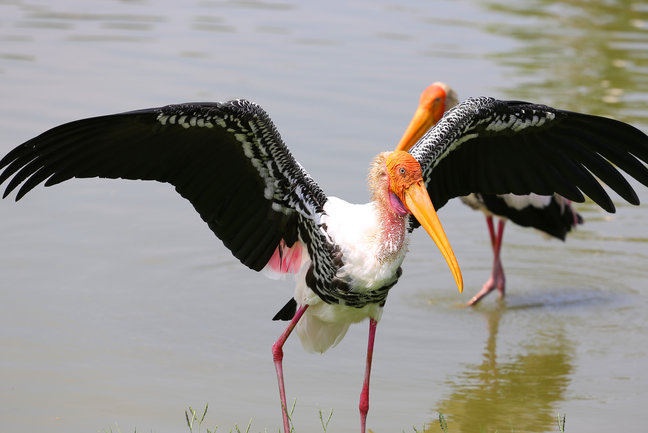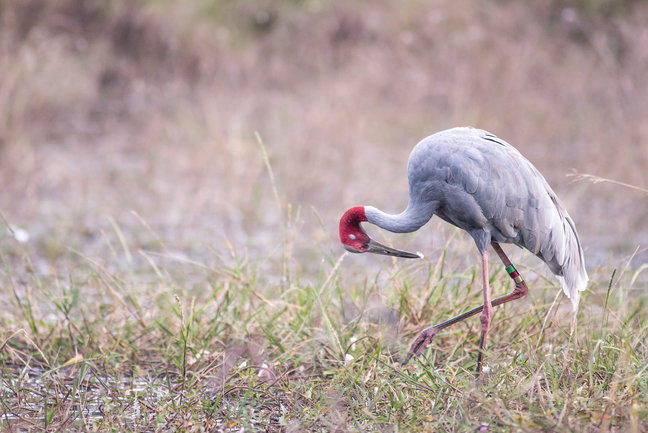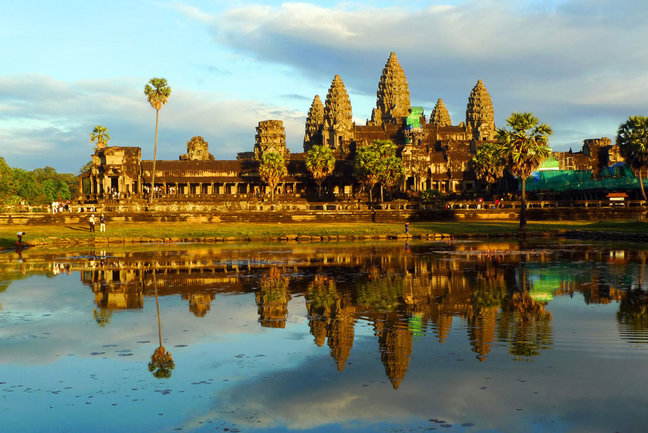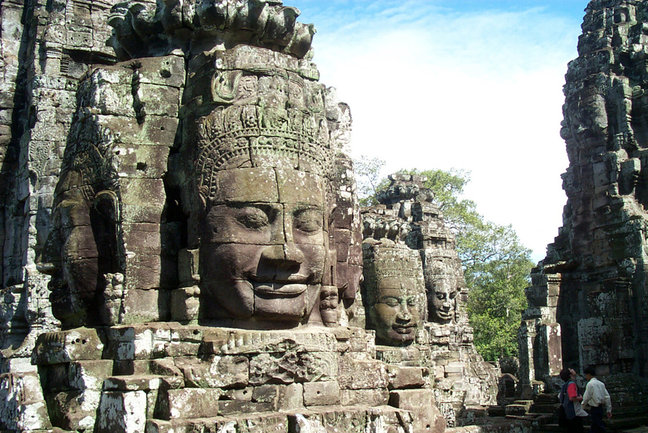Please enter your username and password to logon to the member pages
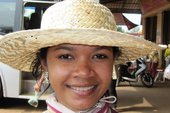
Cambodia Bird Watching tour
Cambodia Bird Watching tour Overview
Combining history, culture, and nature with visits to the temples of Siem Reap interspersed with bird watching excursions in the wetlands and exploration of the countryside, including Phnom Kulen Mountain, rural villages, the Ang Trapaeng Thmor wetlands and Prek Toal biosphere to spot elusive birds such as Ibis, Pelicans, Cranes, and Storks.Cambodia Bird Watching and Nature Tour
This itinerary combines history, culture, and nature with visits to the spectacular temples of Siem Reap interspersed with bird watching excursions in the wetlands and exploration of the countryside. Using Siem Reap as a base, you’ll visit Phnom Kulen Mountain, rural villages and take trips to the Ang Trapaeng Thmor wetlands and Prek Toal biosphere to spot elusive birds such as Ibis, Pelicans, Cranes, and Storks.
Best time for this itinerary: November to March
Touring style: Private basis with professional English speaking guide and driver
Day 1: Arrive Siem Reap
On arrival at Siem Reap, the gateway to the famed Temples of Angkor, you will be met by your driver and guide who will transfer you to your hotel.
This afternoon, get your first glimpse of Angkor. Enjoy the spectacular view from above and get an idea of the sheer size of the temple area as you ride in a tethered helium balloon that takes you 120 m up in the air! See Angkor Wat, Phnom Bakheng, West Baray and other ruins amongst the surrounding jungle and rice paddies glimmering in the best evening light.
Start the tour with the crowning jewel of Khmer architecture, Angkor Wat, the national symbol and the highlight of any visit to Cambodia. The largest, best preserved and most religiously significant of the Angkor temples, it impresses visitors both by its sheer scale and beautifully proportioned layout as well as the delicate artistry of its carvings. On the way, stop to enjoy the intricate stone carvings that adorn nearly every surface with some 1,700 Apsaras or celestial dancers, sculpted into the walls. Angkor Wat is stunning at any time of the day, but sunrise and sunset are especially beautiful times to watch the play of light on the stones.
Overnight in Siem Reap.
Distance and journey time: 8 km, 15 mins
Day 2: Siem Reap
Discover Angkor Thom: The fortified city of Angkor Thom covers an area of 10 km. Enclosed by a wall and wide moats the city includes many of Angkor’s most popular sights. Enter by the monumental South Gate over a causeway lined on either side by statues of demons and gods each carrying a giant naga. Continue to the Terrace of the Elephants and the Terrace of the Leper Kings, former spaces for public ceremonies both adorned with dramatic bas reliefs. Visit the ruined Baphuon, Royal Enclosure, and Phimeanakas before continuing to the mysterious Bayon Temple.
Discover Ta Prohm, one of the most popular attractions of Angkor as much of the jungle has not been cleared and it looks very much as most of the Angkor monuments would have appeared when European explorers first stumbled across them.
Overnight in Siem Reap
Day 3: Siem Reap to the wetlands
Early morning, visit the Sam Veasna Centre in Siem Reap. The Centre promotes wildlife conservation in Cambodia and develops bird watching sites in cooperation with the Wildlife Conservation Society and local communities. They provide a unique opportunity for visitors to observe local wildlife without disrupting their natural habitat. From there, head to the Ang Trapaeng Thmor protected wetland area (2 ½ hours from Siem Reap), accompanied by a specialist bird guide.
This area was originally constructed for irrigation during the rule of the Khmer Rouge, but is now surrounded by rice paddies and is home to a great diversity of water birds. Here you can expect to see over 300 Sarus Cranes in the dry season. A further 200 species of other birds live and breed here, of which 18 have been classified as globally or near globally threatened. This is also one handful of sites in Cambodia where the endangered Eld’s Deer can be seen. The best time to see the Sarus Crane is from February to May, although many bird species can be spotted year-round. Return to Siem Reap in the late afternoon.
Overnight in Siem Reap.
Distance and journey time: 90 km, 2.30 hrs
Day 4: Siem Reap
After breakfast, travel to the countryside to see the “gem” of the Angkor area, the pretty temple of Banteay Srey which remains the best-preserved temple in Cambodia. It displays some of the finest examples of classical Khmer art as this small temple is noted for its truly remarkable fine bas-reliefs. Banteay Srey is unique in that it is constructed of pink sandstone, which is seen nowhere else in Angkor.
Continue north to Kbal Spean, one of the earliest Hindu pilgrimage sites in Cambodia. A moderate 3 km trek up the hill through dense jungle will reward you with excellent views over the plains and the Kulen hills. At the top, be surprised about the “River of 1,000 Lingas” with its remarkable stone carvings of Hindu gods, animals and other symbols in the river bed. During the raining season, enjoy a refreshing bath in the waterfall, which is extremely popular with local families.
Then visit the Angkor Centre for Conservation of Biodiversity, the first nature conservation centre in Cambodia. The aims of the centre are the rescue, rehabilitation, breeding and reintroduction of threatened wildlife, providing environmental education, promoting wildlife conservation and training local villagers in the sustainable use of natural resources. You can see various endangered species, reptiles, and a beekeeping project.
On the way back, stop at the Landmine Museum which promotes mine awareness. Mr Aki Ra, the museum founder, was trained as a child soldier during the Khmer Rouge regime and is working today as a de-miner. The museum serves also as a rescue centre for a number of landmine amputee children that Aki Ra has brought off Phnom Penh’s streets or from impoverished rural communities.
Catch the beautiful evening light from Pre Rup, a pyramidal temple surrounded by rice fields.
Overnight in Siem Reap.
Distance and journey time: 37 km, 45 mins
Day 5: Siem Reap to Prek Toal
Today, you will embark on one of the most stunning boat trips in Cambodia, as you will be taken from Siem Reap to Prek Toal (duration 3h one way). First, you will float across the mighty Tonlé Sap Lake until it meets with the Stung Sangke River.
The Prek Toal biosphere covers 31,282 hectares and is the living area of water birds such as Greater and Lesser Adjuncts, Black-headed Ibis, Painted Stork, Milky Stork, Spot-billed Pelican, and Grey-Headed Fish Eagle. Visit the Prek Toal Environmental Research Station with a specialist bird guide and take a boat trip through the sanctuary. Return to Siem Reap in the late afternoon.
Overnight in Siem Reap.
Day 6 - Siem Reap – Departure
Enjoy the day at leisure until the transfer to the airport for your departure flight.
Distance and journey time: 8 km, 15 mins

